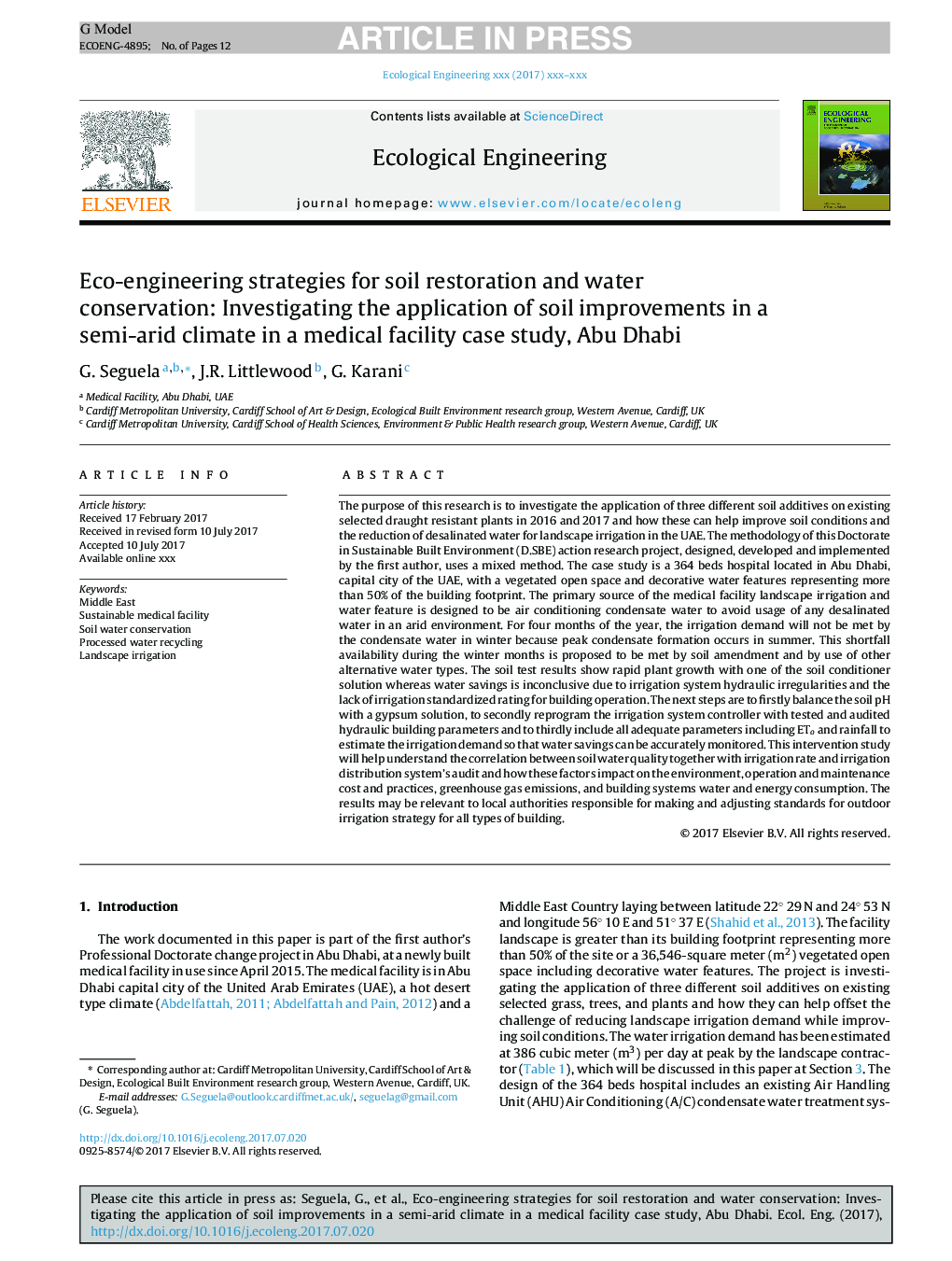| Article ID | Journal | Published Year | Pages | File Type |
|---|---|---|---|---|
| 10223354 | Ecological Engineering | 2018 | 12 Pages |
Abstract
The purpose of this research is to investigate the application of three different soil additives on existing selected draught resistant plants in 2016 and 2017 and how these can help improve soil conditions and the reduction of desalinated water for landscape irrigation in the UAE. The methodology of this Doctorate in Sustainable Built Environment (D.SBE) action research project, designed, developed and implemented by the first author, uses a mixed method. The case study is a 364 beds hospital located in Abu Dhabi, capital city of the UAE, with a vegetated open space and decorative water features representing more than 50% of the building footprint. The primary source of the medical facility landscape irrigation and water feature is designed to be air conditioning condensate water to avoid usage of any desalinated water in an arid environment. For four months of the year, the irrigation demand will not be met by the condensate water in winter because peak condensate formation occurs in summer. This shortfall availability during the winter months is proposed to be met by soil amendment and by use of other alternative water types. The soil test results show rapid plant growth with one of the soil conditioner solution whereas water savings is inconclusive due to irrigation system hydraulic irregularities and the lack of irrigation standardized rating for building operation. The next steps are to firstly balance the soil pH with a gypsum solution, to secondly reprogram the irrigation system controller with tested and audited hydraulic building parameters and to thirdly include all adequate parameters including ETo and rainfall to estimate the irrigation demand so that water savings can be accurately monitored. This intervention study will help understand the correlation between soil water quality together with irrigation rate and irrigation distribution system's audit and how these factors impact on the environment, operation and maintenance cost and practices, greenhouse gas emissions, and building systems water and energy consumption. The results may be relevant to local authorities responsible for making and adjusting standards for outdoor irrigation strategy for all types of building.
Related Topics
Life Sciences
Agricultural and Biological Sciences
Ecology, Evolution, Behavior and Systematics
Authors
G. Seguela, J.R. Littlewood, G. Karani,
